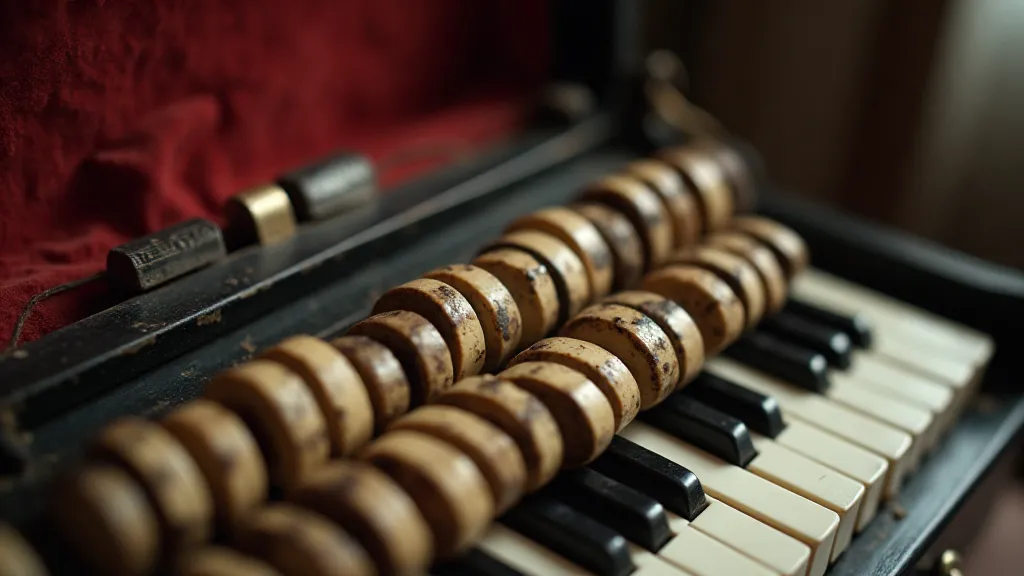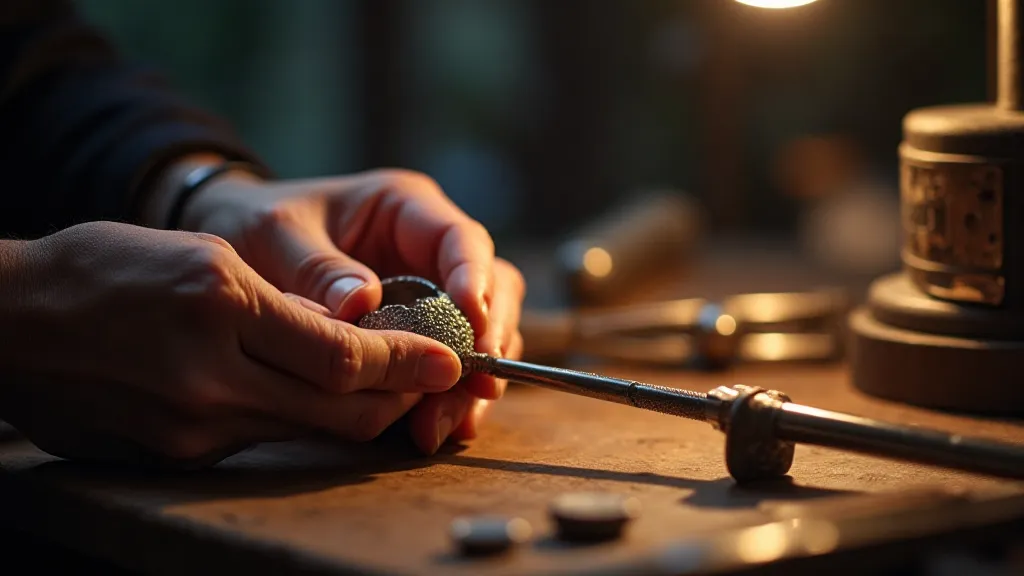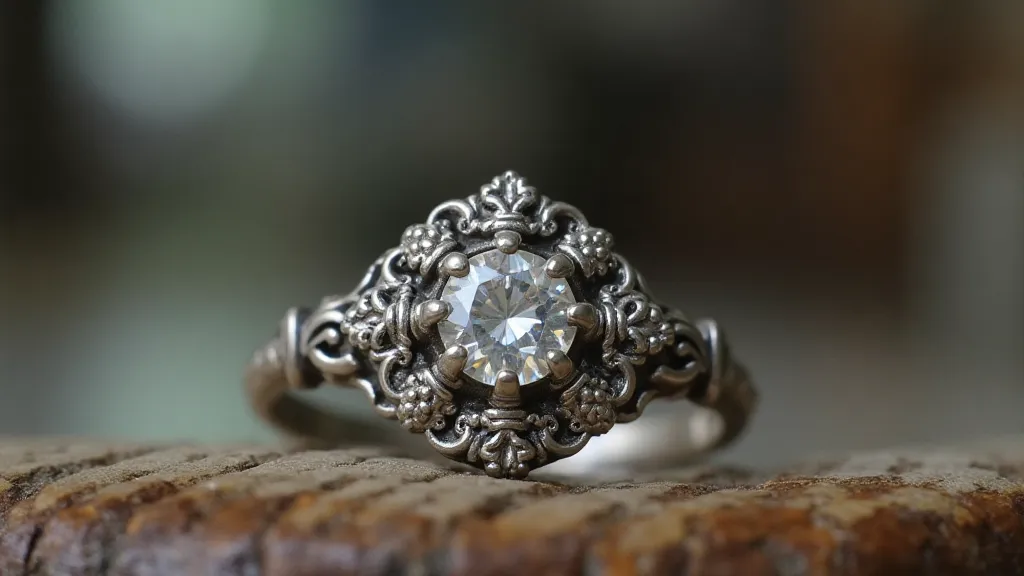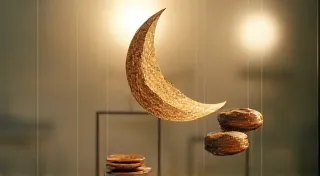Gemsmith's Alchemy: Forging Jewelry Narratives Through Stone and Metal
There’s a particular resonance to antique accordions, a breath of history held within bellows and keys. Each press releases a note, a fragment of a past celebration, a hushed serenade, perhaps even a mournful farewell. They’re not just instruments; they’re vessels of memories, painstakingly crafted and imbued with the spirit of their makers and players. Similarly, truly exceptional jewelry transcends the mere adornment of the body; it becomes a conduit for storytelling, a miniature work of art echoing with meaning and emotion. This isn’t simply about setting a gemstone; it's about a gemsmith's alchemy – transforming raw materials into tangible narratives.

The Language of Stone and Metal
For centuries, humans have imbued stones and metals with symbolic meaning. Consider the ancient Egyptians, who revered lapis lazuli for its connection to the heavens and used gold to represent the sun's power. The Romans adorned themselves with amethyst to prevent drunkenness, believing it held protective qualities. Even today, we unconsciously associate certain stones with specific traits: ruby for passion, emerald for growth and renewal, sapphire for wisdom and loyalty. Metals, too, carry their weight in symbolism. Gold represents wealth and status, silver denotes grace and purity, while copper resonates with healing and vitality. A skilled jewelry designer understands this language, and uses it to create pieces that resonate on a deeper level.
The beauty of custom jewelry design lies in its ability to weave together these symbolic threads into a unique and personal narrative. It moves beyond generic, mass-produced items and allows for a truly intimate expression of identity, love, loss, or aspiration. Think of a mourning brooch from the Victorian era, intricately crafted with jet or onyx – symbols of grief – alongside a portrait of the deceased. It wasn’t just a piece of jewelry; it was a tangible reminder of a lost loved one, a miniature memorial in wearable form.
A Legacy of Craftsmanship: From Miners to Makers
The process of creating such meaningful jewelry is a journey, often spanning continents and generations. It begins with the earth itself - with the tireless work of miners extracting raw gemstones from the planet's depths. These stones, often rough and unassuming, are then sent to lapidaries – skilled artisans who transform them through a complex series of lapidary techniques. The process of cutting and polishing a stone is an art in itself; it requires a keen eye, steady hands, and a deep understanding of the stone's internal structure. A poorly executed cut can diminish a stone's beauty and value, while a masterful cut can reveal its hidden brilliance.
Once the stone is ready, a jeweler takes over, selecting appropriate metals and meticulously crafting the setting. This isn't merely about secure placement; it's about harmonizing the stone's color, shape, and texture with the metal's character. A delicate filigree setting might enhance the romantic quality of a rose-cut diamond, while a bold, geometric setting could complement the intensity of a deep-red garnet. The attention to detail is paramount; a slightly misaligned prong or a poorly finished edge can detract from the overall effect. Just as a masterful accordion repairer understands the nuances of bellows and reeds, a skilled jeweler understands the intricacies of metalwork.

The Art of Narrative: Examples Through History
Consider the signet rings of ancient Rome, often bearing the family crest or a personal emblem. They weren't just symbols of status; they were a visual representation of lineage and identity. Similarly, the elaborate engagement rings of Victorian England often incorporated sentimental motifs – flowers representing specific virtues, initials discreetly engraved on the band, or tiny lockets concealing miniature portraits.
Even in more contemporary design, the potential for narrative remains vast. A piece crafted with stones collected during a significant life event—a trip to a specific location, a shared experience with a loved one—becomes a powerful memoir, wearable and cherished. Think of a necklace incorporating a small piece of turquoise from a favorite hiking spot, or a bracelet featuring a gemstone from the birth month of a child. These aren’t just accessories; they are tangible links to personal history.
Beyond Aesthetics: Emotional Resonance
Ultimately, the true power of gemsmith's alchemy lies in its ability to evoke emotion. A carefully crafted piece of jewelry can serve as a reminder of a cherished memory, a symbol of hope and inspiration, or a testament to enduring love. It’s this emotional resonance that elevates jewelry beyond mere decoration and transforms it into a meaningful work of art.
The painstaking process of creating such pieces – from the initial mining of the stone to the final polish – imbues them with a sense of value that transcends monetary worth. Just as the worn keys of an antique accordion tell a story of countless performances and shared moments, a custom-designed piece of jewelry holds within it a narrative waiting to be unveiled. It becomes more than just something beautiful to wear; it becomes a cherished heirloom, passed down through generations, each wearer adding their own chapter to its evolving story.

Embracing the Legacy
Whether you’re a seasoned collector, an aspiring lapidary, or simply someone who appreciates the artistry of handcrafted jewelry, the principles of gemsmith’s alchemy remain timeless. By understanding the language of stone and metal, embracing the legacy of craftsmanship, and prioritizing emotional resonance, we can continue to forge jewelry narratives that inspire, connect, and endure for generations to come.





